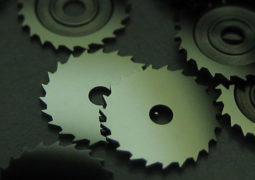The watch and jewelry market: mainly mechanical watch manufacturers
We mainly target manufacturers of mechanical watches, with neither electronics nor batteries inside.
Today, we work with big names such as Swatch Group brands such as Omega and Breguet, with Jaeger-Lecoultre, Cartier, Rolex, Patek Philippe, etc. (…)
Can you tell us who at in the watch and jewelry sector your machines are aimed? Who are your customers?
We target both these large manufacturers and their subcontractors.
Unsurprisingly, 90% of the market is in Switzerland and even within Switzerland itself, 80% of the market is in the French-speaking part of the country, i.e. in the Swiss Romande.
There is also some watchmaking in Franche-Comté, Germany and Italy, but the market is mainly located in Switzerland.

We target both these large manufacturers and their subcontractors
What types of parts used in the watchmaking industry are your machines capable of cleaning? Are there any parts that are particularly delicate to clean?
We can clean all the parts that make up a mechanical watch.
This may be the bracelet, the clasp, the hands, the movement, the glass, etc. We have machines suitable for all these parts, provided they are metal or plastic. A leather strap cannot be cleaned with an ultrasonic cleaning machine.
The most delicate parts to clean – particularly the hands or applied indexes (these are the small numbers attached to the watch face) – are very small parts and so cleaning them is particularly delicate.
To give you an idea, watch manufacturers generally initiate double the planned production volume to ensure that there is enough at the end of the process.
With our expertise, losses are greatly reduced.
What advantages do your machines offer the watchmaking industry?
Our machines can meet all cleaning needs. As with our machines for the medical sector, we “grade” our machines according to our customers’ requirements and to suit the production stage in which we are used.
Unlike the medical sector, we rarely offer grade 3 and very rarely grade 2. It is also important to know that the parts are cleaned between each manufacturing step.
It is not uncommon, to produce a watch, more than 200 cleaning operations are carried out before final assembly.
What quality standards are currently used in the watchmaking industry?
The only standard used is that, when looking at a watch with the naked eye, no defect should be apparent at 30 cm. It’s quite amazing but it’s the only existing standard in this market!

The only standard used is that, when looking at a watch with the naked eye, no defect should be apparent at 30 cm
Can you tell us about the LLLE6 cleaning bench? How does this machine differ from others?
As I was saying, we work with watch manufactures, but also with these watchmakers’ subcontractors.
In general, they don’t handle the same volumes or have the same financial resources, but they have the same requirements and obligations as the big names they work for.
These subcontractors are often small or very small businesses employing about ten people. As a result, we developed this machine to meet their requirements while offering a complete cleaning tool at an affordable price.
It’s a very small machine, smaller than 1 m, but it can clean all the parts making up a watch (see all our standard machines).
Which ultrasound technology is particularly suitable for watchmaking?
Multi-frequency ultrasound technology is particularly suitable for watchmaking. We have brought a big plus to this market with this technology.
Most of the machines sold in this sector are equipped with this technology, which ensures a high level of cleanliness of the parts.

Multi-frequency ultrasound technology is particularly suitable for watchmaking
Are you going to introduce a new line of machines dedicated to watchmaking? Are you thinking about any particular projects?
Yes, we have several projects in the pipeline that could be perfect for watchmakers. In particular, we are thinking about offering fully automated micromachines.
We have made one dedicated to the optical industry – FISA LABS ONE – that could transpose perfectly to some watchmaking applications.
These machines are very compact with small 3 L tanks that could prove very useful.
It’s worth noting that watchmaking is very sensitive to global market variations, the main “consumers” of top-of-the-range watches are to be found particularly in the Americas, parts of Asia such as Hong Kong, Japan and China, and in the Middle East.
There are protectionist tendencies in these countries that can hold back the market. Over 20 years, we have already had 3 slumps in the watch market.
Other than sales revenues, what have your customers in the watchmaking sector brought you?
The watchmaking market has given us a better understanding of cleaning processes. As we cover all trades, all materials and all contaminants, we encounter all the problems.
If you know how to meet the demands of watchmakers, you are capable of responding to almost any request and in almost any sector, so it’s a very good education.
FISA, 19 March 2020

